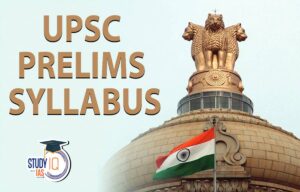Table of Contents
Introduction
The Vedic Period (c. 1500 BCE–500 BCE) in ancient India is divided into the Rig Vedic Period (c. 1500–1000 BCE) and the Later Vedic Period (c. 1000–500 BCE). This period saw significant shifts in society and economy shaping the foundation of Indian civilization.
Body
Changes in Society
- Varna system & caste:
- Rig Vedic: Society was egalitarian, with no rigid caste distinctions. The division was primarily functional, based on occupation (Brahmins, Kshatriyas, Vaishyas).
- Later Vedic: The caste system became rigid and hierarchical, with the addition of the Shudras as the fourth and lowest varna, often excluded from rituals.
- Eg: Shudras were denied access to sacred texts and ceremonies.
- Position of women:
- Rig Vedic: Women held significant roles, participating in rituals and receiving education.
- Eg.: Female scholars like Lopamudra mentioned in the Rig Veda.
- Later Vedic: The status of women declined. Their participation in public life reduced and patriarchal norms tightened.
- Eg. Practices like child marriage began to emerge.
- Rig Vedic: Women held significant roles, participating in rituals and receiving education.
- Social rituals and practices:
- Rig Vedic: Rituals were simple, based on nature worship and basic yajnas.
- Later Vedic: Rituals became complex and elaborate, with emphasis on Brahminical power and sacrificial rites.
- Eg. The Ashvamedha (horse sacrifice) ritual, reinforcing the authority of kings and Brahmins.
- Education:
- Rig Vedic: Education was accessible to both genders, focusing on oral traditions.
- Later Vedic: Education became restricted to the upper castes.
Changes in Economy
- Shift from Pastoralism to Agriculture:
- Rig Vedic: The economy was pastoral, with cattle being the primary source of wealth.
- Later Vedic: Agriculture became dominant. The introduction of iron ploughs increased productivity.
- Trade and Commerce:
- Rig Vedic: Limited trade, primarily barter-based.
- Later Vedic: Trade expanded. The use of metallic coins (Nishka) facilitated commerce and merchants (Vaishyas) gained importance.
- Property and land ownership:
- Rig Vedic: Wealth was measured in cattle, and there was no formal land ownership.
- Later Vedic: Land ownership became institutionalized. Kings granted lands to Brahmins and nobles, marking the rise of feudal structures.
- Crafts and technology:
- Rig Vedic: Craft specialization was minimal, serving domestic needs.
- Later Vedic: Crafts like metalworking, pottery and carpentry became specialized, boosting trade and urbanization.
Conclusion
Several elements from the Vedic Period still resonate in contemporary India. The caste system, though less rigid, continues to shape social dynamics. The prominence of agriculture and trade, established during the Later Vedic period, remains central to India’s economy today.


 NATO Countries List 2025, Members, Funct...
NATO Countries List 2025, Members, Funct...
 UPSC Prelims Syllabus 2025 PDF, Check Su...
UPSC Prelims Syllabus 2025 PDF, Check Su...
 UPSC Toppers 2024 Felicitation Program b...
UPSC Toppers 2024 Felicitation Program b...





















